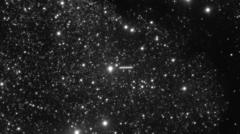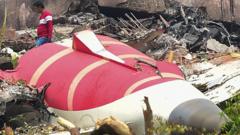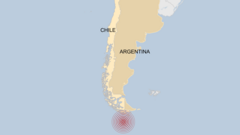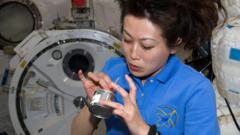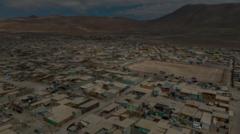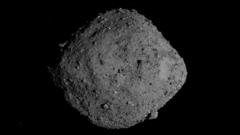A revolutionary new telescope, the Vera Rubin Observatory, has released its inaugural images, showcasing intricate details of nebulae and promising to expand our understanding of the cosmos over the next decade.
New Era for Astronomy: First Image from Vera Rubin Telescope Released
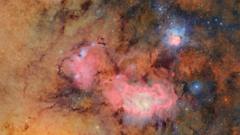
New Era for Astronomy: First Image from Vera Rubin Telescope Released
The Vera Rubin Observatory in Chile unveils its first captivating celestial images, paving the way for groundbreaking discoveries in the universe.
The world of astronomy has entered a transformative phase with the unveiling of the first images from the Vera Rubin Observatory in Chile. This powerful new telescope has demonstrated its remarkable capability of delving into the intricate depths of the universe, presenting images that capture the vibrant gas and dust clouds of the Trifid and Lagoon nebulae, located approximately 9,000 light years from Earth.
Equipped with the most advanced digital camera known to science, the observatory has the potential to change our cosmic insights drastically. This cutting-edge instrument is on a mission to find elusive objects in our solar system, such as a hypothetical ninth planet, and will serve as a crucial tool for detecting near-Earth asteroids while mapping the Milky Way galaxy. Furthermore, it promises to bring clarity to the shadowy realms of dark matter that constitute much of the universe's mass.
The Vera Rubin Observatory will embark on a continuous ten-year survey of the southern night sky, offering a treasure trove of data as noted by Professor Catherine Heymans, the Astronomer Royal for Scotland, who remarked on the significant accomplishments leading to this moment, after 25 years of diligence.
Situated on Cerro Pachón in the Chilean Andes, the observatory boasts exceptional conditions for astronomy—high altitude, minimal humidity, and minimal light pollution. To preserve these optimal viewing conditions, engineers are dedicated to blocking any stray light that could affect observations. Each precise component of the design is essential; the telescope's unique three-mirror system allows for an unparalleled collection of starlight, enabling scientists to study galaxies and supernovae from billions of years ago.
The camera itself, weighing 2,800 kg and featuring a staggering resolution of 3,200 megapixels, is capable of capturing an astonishing array of images, averaging one every 40 seconds over extended nighttime periods. This technological advancement means it could even detect the faintest of celestial objects, all while building a comprehensive database that peaks around 10 million alerts per night.
The long-term goals of the survey include observing rapid changes in transient objects, mapping the solar system, and investigating the formation and evolution of the Milky Way. The continuous scanning of the same regions offers the unique ability to identify transient phenomena that could lead to unprecedented discoveries.
“In the years to come, this observatory will allow us to explore the boundaries of the galaxy more effectively than ever,” said Professor Alis Deason from Durham University, who anticipates a deeper understanding of the galaxy's structure and possible confirmation of the existence of Planet Nine.
As the scientific community eagerly awaits the findings from the Vera Rubin Observatory, one thing is clear: the exploration of the cosmos has taken a monumental leap forward, unlocking the mysteries of our universe that have intrigued humanity for centuries.

